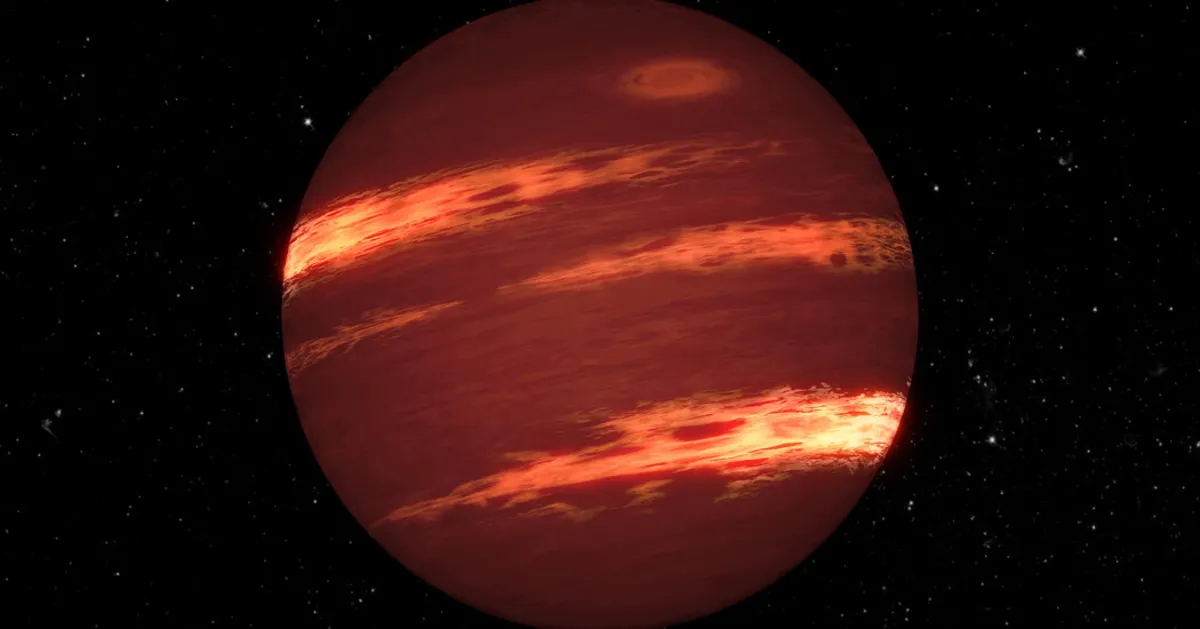
In a groundbreaking discovery, astronomers have detected trace amounts of phosphine on a brown dwarf located dozens of light years from Earth. This intriguing molecule is typically produced by living organisms on our planet. However, scientists caution that this finding does not imply the existence of life in such an extreme environment. The research, published in the journal Science on Thursday, may significantly aid scientists in their ongoing quest to identify both phosphine and potential life forms throughout the galaxy.
The detection of phosphine in the atmosphere of a brown dwarf—a celestial object that exists between a planet and a star—could enhance our scientific understanding of how and where this molecule might be found in other regions of the universe. Ultimately, this knowledge will assist astronomers in determining if phosphine can serve as a reliable indicator of life on rocky planets within the Milky Way galaxy. Adam Burgasser, an astrophysicist at the University of California, San Diego, and the study's lead author, emphasized the importance of understanding the natural processes that can produce phosphine before concluding that its presence must originate from biological sources.
Phosphine is a molecule composed of three hydrogen atoms and one phosphorus atom. It is particularly challenging to produce and easily destroyed under various conditions. On Earth, phosphine is primarily generated by microbial life found in environments such as rotting swamp plants and animal intestines. The announcement of phosphine's potential existence on Venus in 2020 ignited widespread interest in this molecule as a possible indicator of extraterrestrial life. However, it is crucial to note that phosphine can also be found in uninhabitable environments, like the gas giants Jupiter and Saturn.
Years of observations using the James Webb Space Telescope initially yielded disappointing results, with very little phosphine detected in these celestial bodies. However, the brown dwarf known as Wolf 1130C has defied expectations. Dr. Burgasser and his research team utilized two instruments on the Webb telescope to analyze the wavelengths of light emitted and absorbed by the brown dwarf, leading to the discovery of phosphine at a concentration of 100 parts per billion. This means that in an atmosphere containing one billion particles, 100 are phosphine.
Eileen Gonzales, an astrophysicist at San Francisco State University and the analysis leader, expressed her astonishment at finally detecting phosphine after extensive searches. Melanie Rowland, an astronomer at the American Museum of Natural History, noted that the amount of phosphine found aligns with astronomers' predictions, although Wolf 1130C is not a typical brown dwarf; its age and the scarcity of heavier elements like oxygen in its atmosphere make this discovery even more remarkable.
The reasons why other brown dwarfs lack significant phosphine remains uncertain. Possible explanations include the presence of other more abundant molecules that could obscure the phosphine signal or the idea that phosphorus may be condensing and falling out of the atmosphere. Dr. Burgasser acknowledged that current atmospheric models may be inaccurate, suggesting that Wolf 1130C may possess unique characteristics that allow phosphine to thrive.
Phosphine is relatively rare in the universe, as it tends to break down when exposed to ultraviolet light and cannot form in many environments. Nonetheless, its unstable nature makes it a compelling candidate for indicating the presence of life. Clara Sousa-Silva, an astrochemist at Bard College who played a role in the detection of phosphine on Venus and in the brown dwarf, stated that finding this molecule in inhospitable places is essential for understanding its implications in potentially habitable environments.
The detection of phosphine on Wolf 1130C is not just an exciting scientific milestone; it also opens up new avenues for exploration in the search for extraterrestrial life. As researchers continue to investigate the chemistry of phosphine and its potential biological significance, this finding reinforces the idea that the universe is far more complex and intriguing than we currently understand.